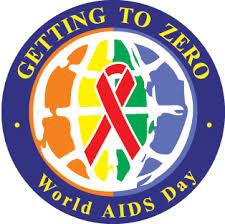
From 1998-2006 I had the privilege of being Director of a regional HIV/AIDS Services Organisation, the Alliance for Living, in New London, Connecticut, USA. This was my first job as the Executive Director of an NGO and it wasn’t easy as I guided two agencies through a merger to form the Alliance. While in this job I went through a divorce and found a great deal of empathy from those that I worked with and those that were being served. Looking back, it was and continues to be, an incredible organisation, providing a comprehensive range of services, i.e. housing, food pantry, social activities, support groups, haircuts, massage, library, access to medicine, fitness center, advocacy training and opportunities for developing empowerment in those who came to the Alliance for services, fighting stigma through the telling of people’s stories, especially to students. Throughout my eight years I worked with the staff and those living with HIV/AIDS to build and sustain the organisation.
Besides the administrative difficulties of operating an NGO, there were the emotional difficulties of watching and experiencing the deaths of many people whom I came to know, not as people living with HIV/AIDS, many of whom were also impoverished, but as human beings trying to live each day to the fullest. Many of the people who came to the Alliance, for whatever reason, and even though they lived in the US, led a very challenging life. But I came to personally know the Alliance “clients”, Donna, Michael, John as people who only wanted what everyone wants, i.e. a relationship and loving family, a place that they could call home, friends, food, a job. They somehow knew that they needed to advocate more than others, for their needs, but they took this on with local and state legislators. I remember on more than one occasion viewing sections of the AIDS Memorial Quilt, even having a few of those sections displayed at the Alliance, a truly empowering experience for those working on and living with HIV/AIDS. This was also very difficult knowing that each of these sections represented a human being who had live and died.
When I left this job in 2006 more than 25 million people worldwide had died and at least 35 million people were living with HIV. An estimated 4.3 million people were newly infected with HIV in 2006. According to the AIDS Clock, (UNFPA) today there are 40.5 million people living with HIV, every 12 seconds another person contracts HIV and every 16 seconds another person dies from AIDS. According to this same clock 70,000 people (UN AIDS estimates between 39,000-65,000 in 2012) in Nepal are living with HIV. Statistics from 2012 indicate that since the beginning of the epidemic, more than 75 million people, approximately the population of Turkey, have contracted HIV and nearly 36 million, approximately the population of Uganda and more than Canada, have died of HIV-related causes
HIV not only affects the health of individuals, it impacts households, communities, and the development and economic growth of nations. Many of the countries hardest hit by HIV also suffer from other infectious diseases, food insecurity, and other serious problems.
Despite these challenges, new global efforts have been mounted to address the epidemic, particularly in the last decade, and there are signs that the epidemic may be changing course. The number of people newly infected with HIV and the number of AIDS-related deaths have declined, contributing to the stabilization of the epidemic. In addition, the number of people with HIV receiving treatment in resource poor countries has increased from 400,000 in 2003 to 9.7 million in 2012.
Although the WAD 2013 theme is very worthy, “Getting to zero: zero new HIV infections. Zero discrimination. Zero AIDS related deaths”, I’m not at all sure when we will, “get to zero”. In the meantime, we can fully embrace those living with HIV/AIDS and help to reduce the spread of HIV through practicing safe sex and not sharing needles. It’s up to us.










Add new comment